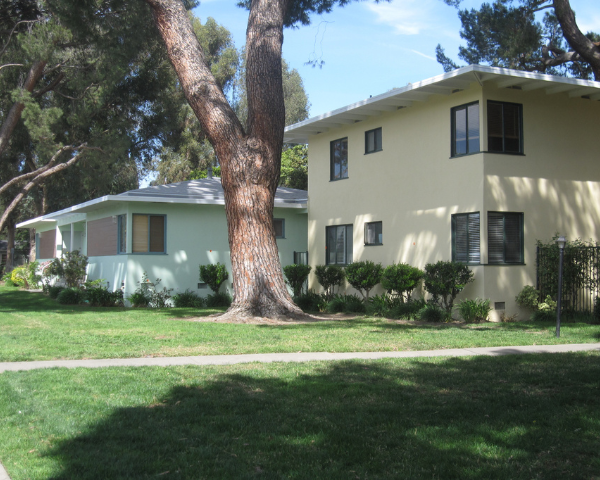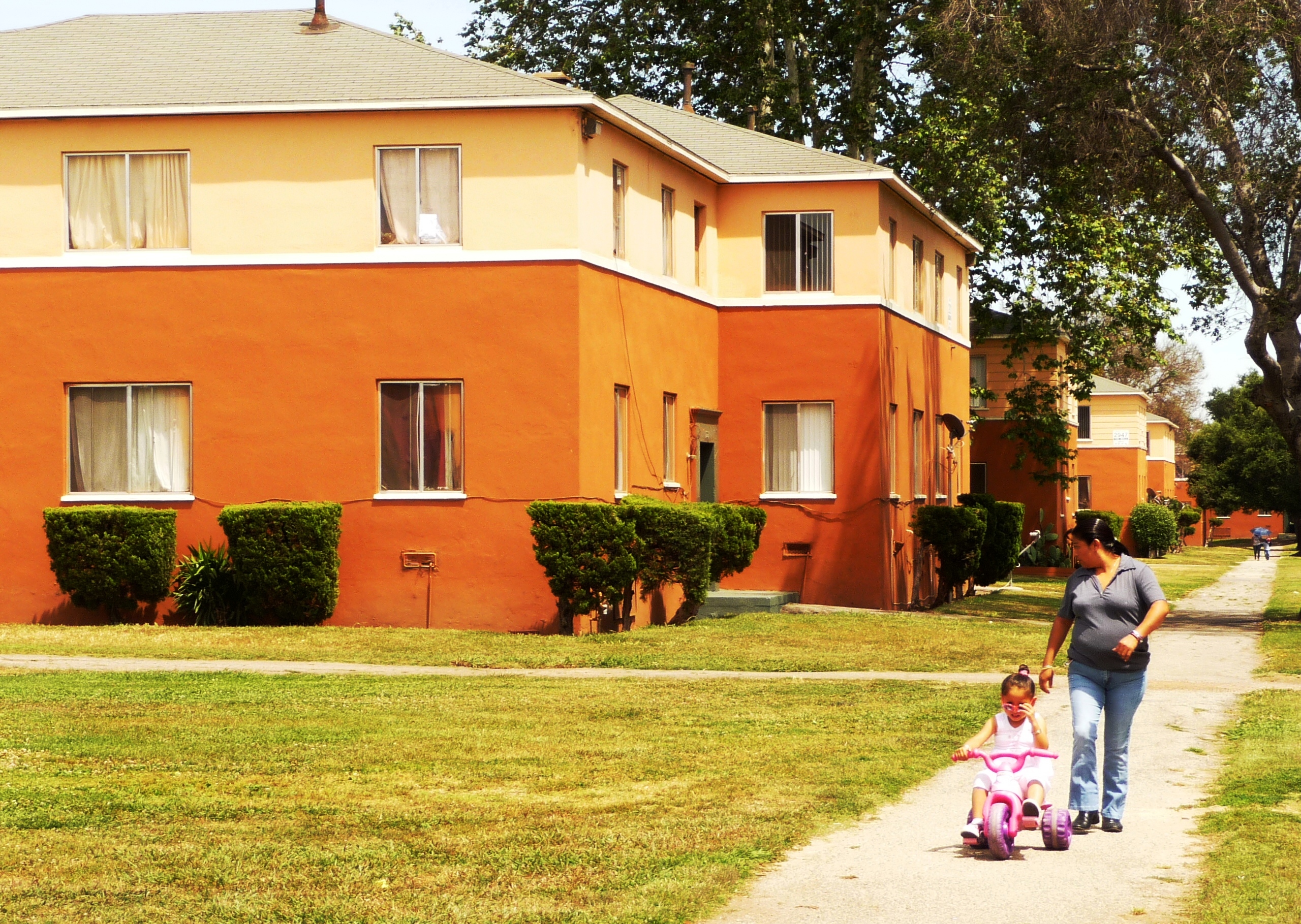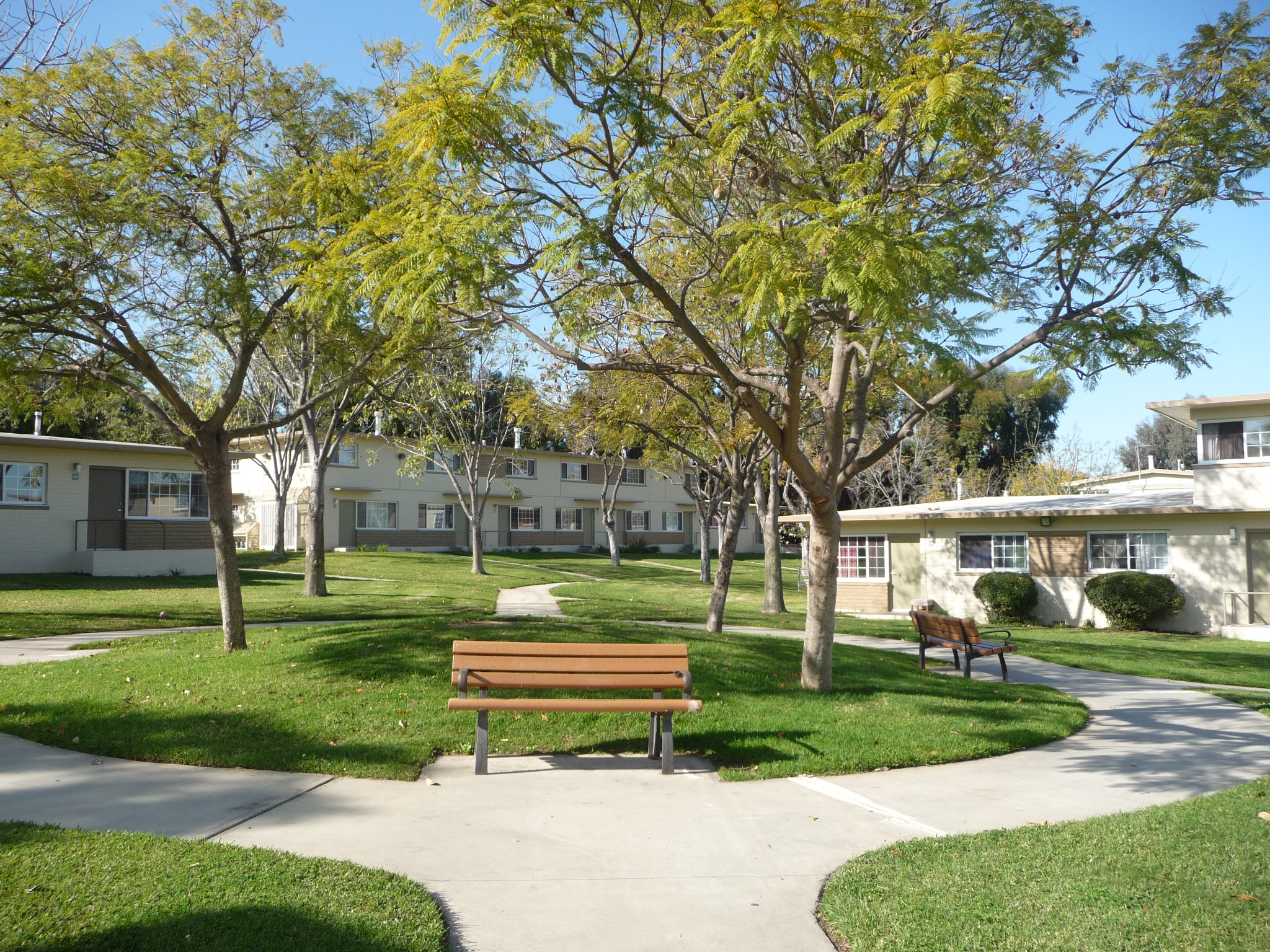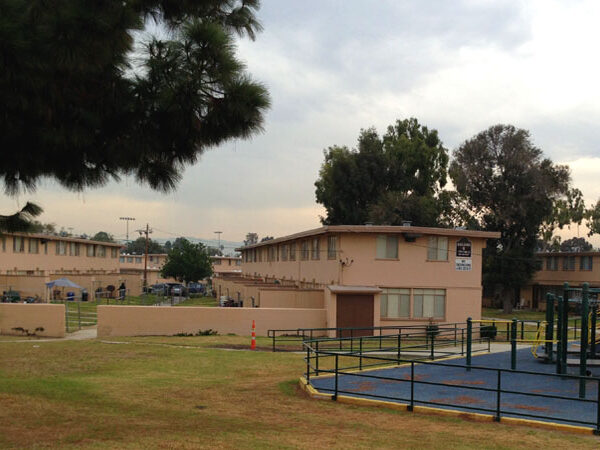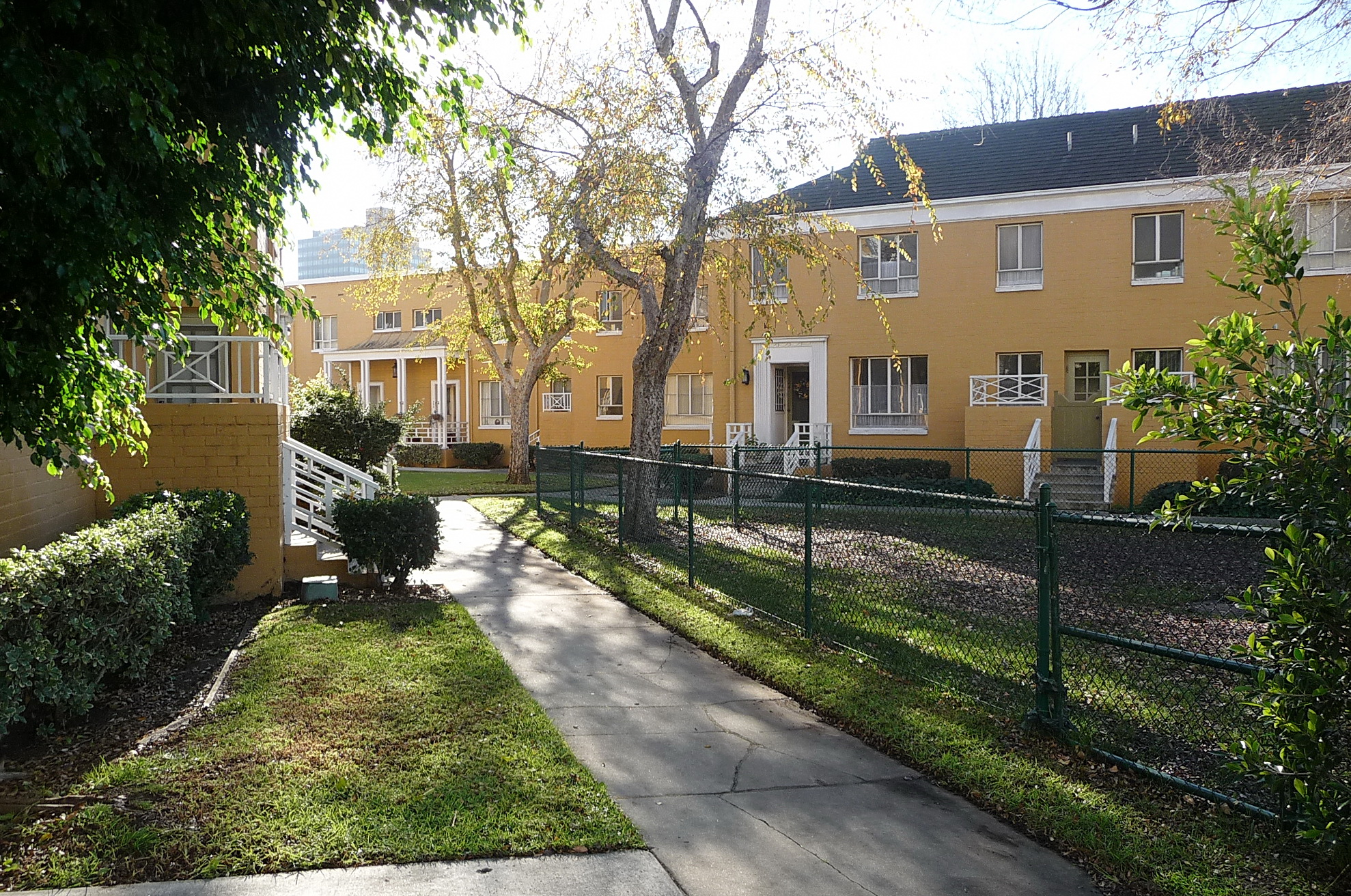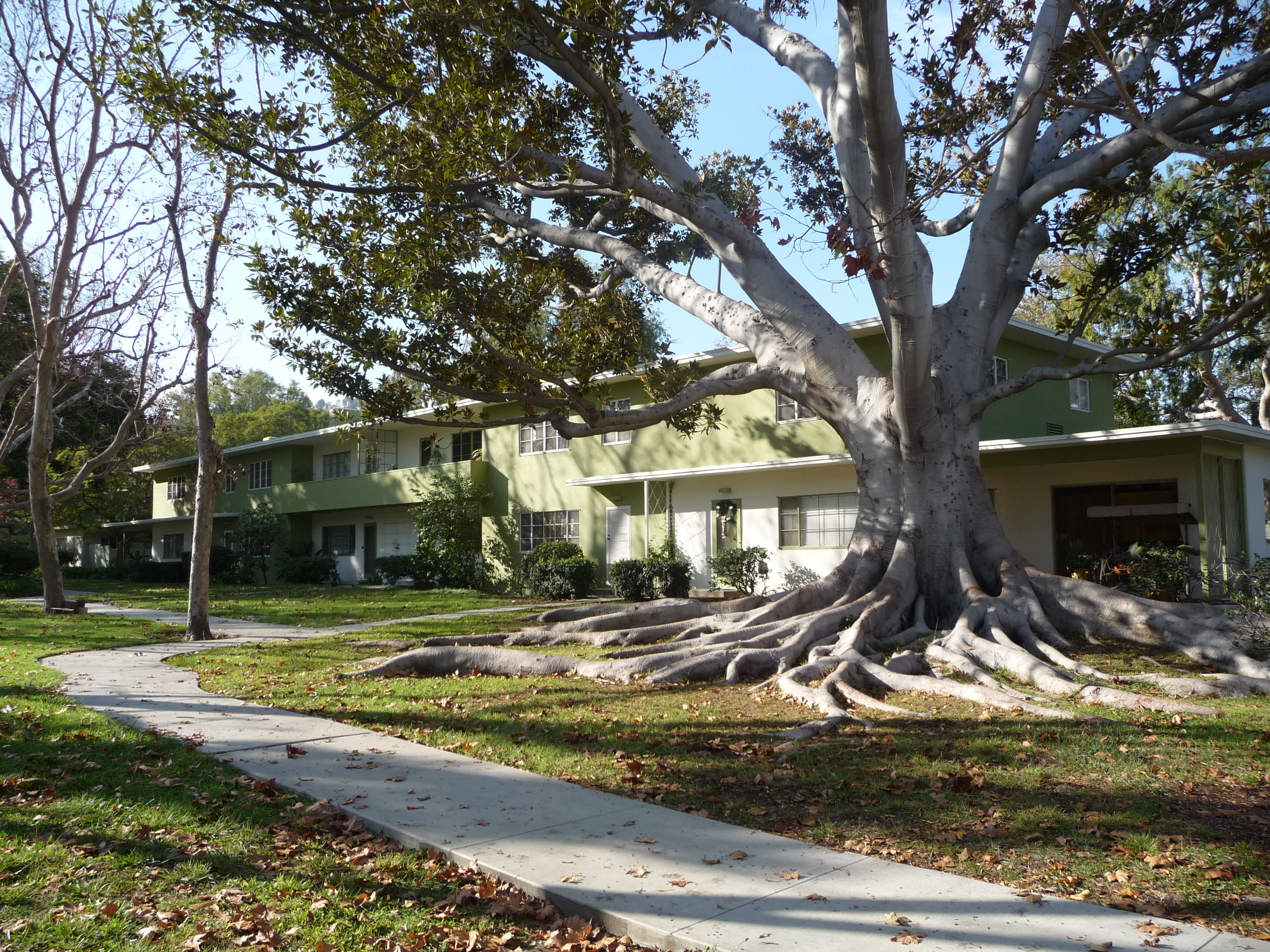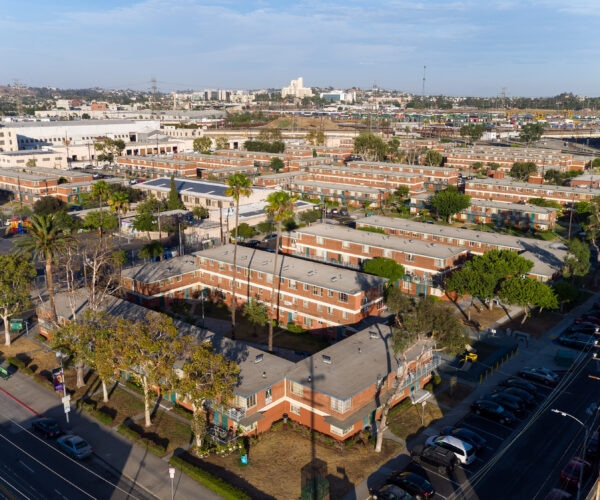Garden Apartments

Resolved
Garden Apartments
With low density and vast open space, historic garden apartments are increasingly vulnerable to demolition or excessive alteration.
Resolved
The L.A. Conservancy’s Garden Apartment campaign broadened awareness and guided rehabilitation projects at some of L.A.’s most significant garden apartment complexes.
To learn more about L.A.’s Garden Apartments, visit Curating the City: We Heart Garden Apartments!
Overview
Following proposed development projects at Chase Knolls, Lincoln Place, and Wyvernwood between 2000-2015, the Conservancy embarked on a campaign to raise awareness of the significance of garden apartments and the threats they face.
As part of this initiative, the Conservancy commissioned Architectural Resources Group (ARG) to complete a Garden Apartments of Los Angeles Historic Context Statement. The Context Statement is an important resource for defining the garden apartment typology, contextualizing its significance, and identifying remaining garden apartments in Los Angeles.
The Conservancy and many others have pursued successful efforts to save historic garden apartment communities following project proposals to demolish and redevelop sites. While garden apartments remain at risk to development pressures, the Conservancy’s campaign successfully broadened awareness and guided rehabilitation projects at some of the City’s most significant garden apartment complexes.
About This Issue
Greater Los Angeles has what is believed to be the second-largest collection of garden apartments in the nation (behind Arlington County, Virginia), with nearly forty built from the late 1930s through the mid-1950s.
Though varied in their execution, these complexes were characterized by a high ratio of open space to buildings, the placement of residential units for maximum sunlight and fresh air, and the separation of pedestrian and vehicular traffic.
The garden apartment typology developed in the 1930s in response to the popularity of Garden City planning principles, the inescapable need for accessible housing during and after the Great Depression bolstered by federal programs that prioritized housing development.
Los Angeles was ripe for the experimentation and development of garden apartments for many reasons including the temperate climate and popularity of indoor/outdoor living; wide expanses of undeveloped land; proliferation of cutting-edge master architects; and population growth due to the expansion of the defense industry during World War II.
The origins of the United States’ twentieth century Garden City Movement dates back to nineteenth century Europe. In response to growing industrialization, Ebenzer Howard convincingly wrote of the need to eschew urban centers for new planned communities on the city’s outskirts. Nearby in Germany, the Zeilenbau promoted the development of superblocks to create interior-facing communities. Beginning in the 1920s United States, urban planners Clarence S. Stein and Henry Wright applied these concepts to address the housing needs. In 1923 Stein and Wright, along with leading figures including Lewis Mumford, Catherine Bauer, Benton MacKaye, and Alexander Bing, founded the Regional Planning Association of America (RPAA). The RPAA saw urban planning and housing design as tools that could powerfully impact communities’ health, well-being, and even values. The principals they identified would guide decades of garden apartments: superblocks composed of modest, uniform residential buildings oriented around shared green space and connected via a series of internal pedestrian paths. These planning principles directly responded to the “social ills” associated with dense urban settings and the automobile by creating a bucolic setting meant to foster health and connection.
While early garden apartments were privately funded developments for middle to upper-class residents, federal housing policy brought Garden City Movement ideals to a wider audience. The Federal Housing Administration (FHA) was born in 1934 out of President Rooselvelt’s “New Deal” and, among other responsibilities, began to insure housing developments. While most FHA-backed residences were single-family, there were numerous garden apartments that targeted higher resourced residents. The United States Housing Act of 1937, which led to the creation of the County and City of Los Angeles Housing Authority (HACLA), made garden apartments more accessible to lower income residents. By 1942, HACLA funded nineteen public housing developments, all garden apartments. Notably, many of these complexes were intentionally racially integrated.
World War II significantly altered the development of garden apartments. In 1941, HACLA issued a policy prioritizing defense workers for units in existing public housing, and supported the creation of several developments specifically for defense workers.
The post-war period brought another, final, era of garden apartments. World War II halted most domestic housing production, bringing the U.S. to the brink of a housing crisis in 1945. Racially-motivated slum clearance only exacerbated this crisis. The Housing Act of 1949 encouraged the creation of more public housing. While Garden Movement principles are evident in some of these developments, higher unit counts and denser complexes signal a shift from the garden apartment typology. The period of significance for garden apartments in Los Angeles ends in 1955.
Our Position
Garden Apartments’ large sites and open spaces, moderate-to-low density, and valuable real estate put them at risk for demolition and redevelopment.
The intent and design of these places put people first, prioritizing a high standard of living and opportunities for social interaction. Decades after their construction, they continue to foster a spirit of community for their residents.
The Conservancy and many others have pursued successful efforts to save historic garden apartment communities following project proposals to demolish and redevelop sites.


